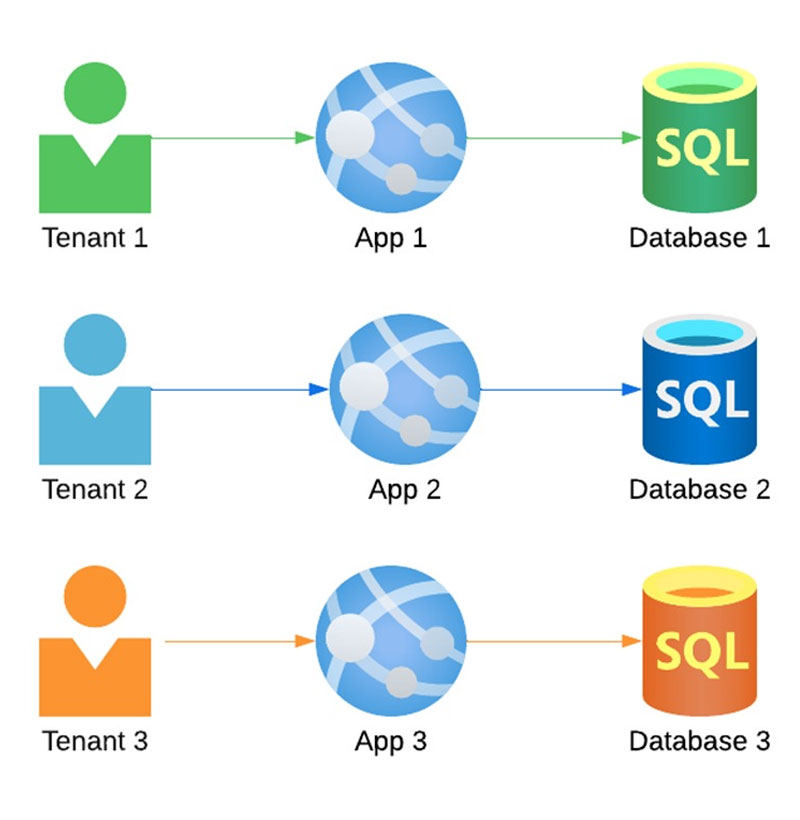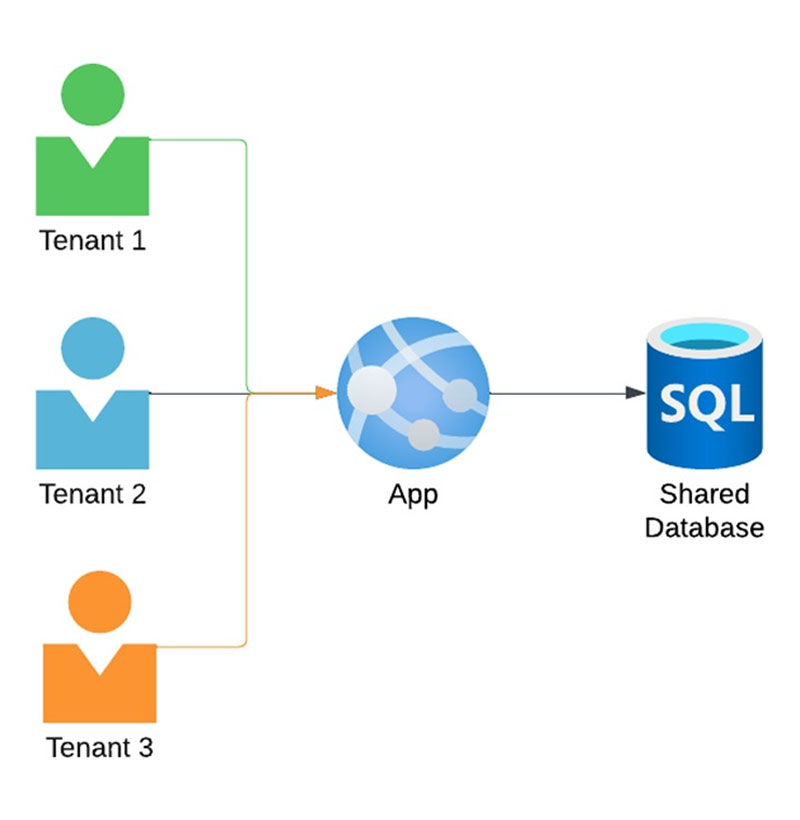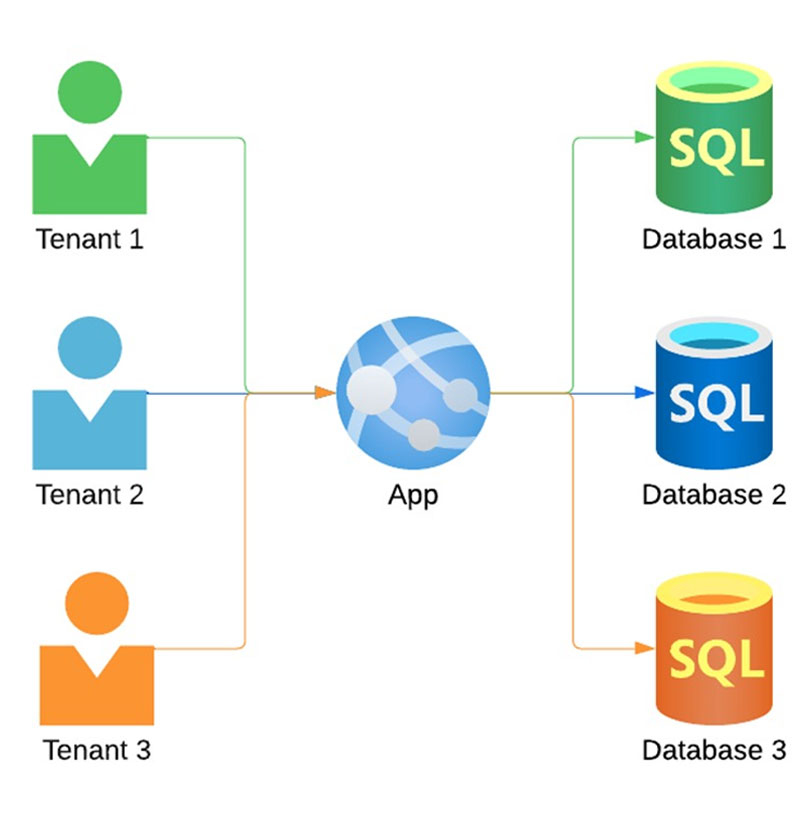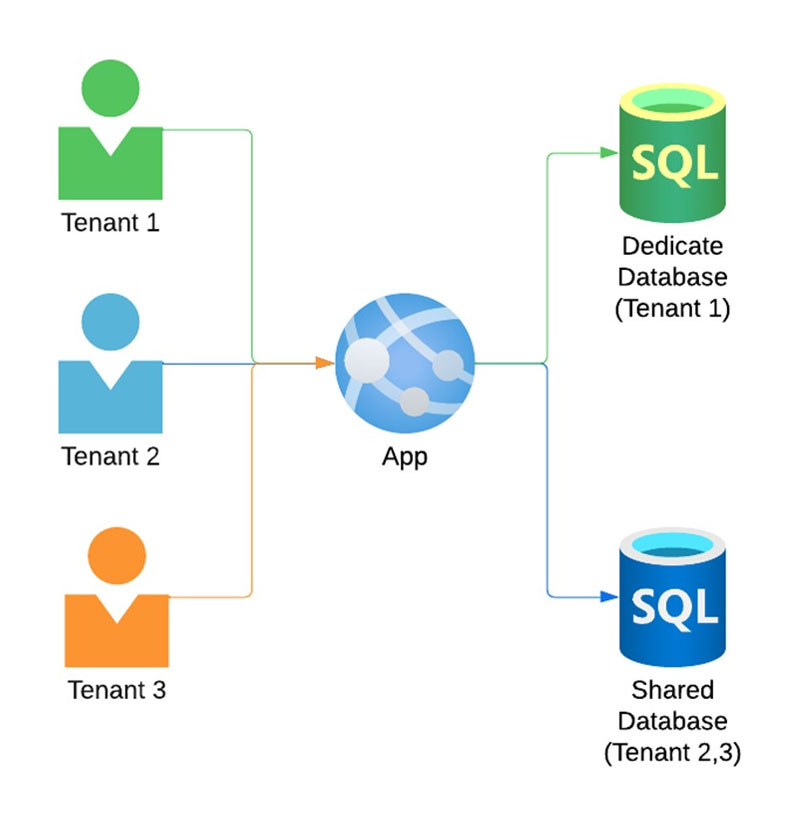Software as a Service (SaaS) delivers software applications over the Internet, enabling users to access and use them via a subscription model without the need for installation or maintenance.
Multi-tenancy is a popular way of structuring SaaS applications. It means that instead of each tenant having their own separate set of applications and databases, they share resources with other tenants. Each of the tenants is isolated and invisible to others.
The term “tenant” refers to a customer or group of application users, each using the application with their isolated data. Security is paramount in multi-tenant architectures, as customers share the same infrastructure and resources.
Data is regarded as the most valuable aspect of a solution as it encompasses crucial business information for you and your customers. Therefore, meticulous data management is essential. When strategizing database components for a multitenant system, it’s crucial to determine an approach for either sharing or isolating your tenants’ data. In this article, we propose a few popular patterns for implementing multitenancy in storage and data management.
Dedicated App with Dedicated Database
All tenants have a dedicated application and dedicated database. In this model, the whole application is installed repeatedly, once for each tenant. This model provides the best data isolation. But the isolation requires that sufficient resources be allocated to each application and database which makes this single-tenant model the most expensive solution from an overall infrastructure cost perspective. It’s most suitable for businesses requiring high-security software development solutions.

Shared Application and Shared Database
All tenants share a single multitenant application and a single database. In the database, the tenants are isolated by a TenantId column on every table with a referential constraint to a tenants table.

Shared Application and Dedicated Databases
All tenants share a single multitenant application, with dedicated databases for each tenant.

In this model, each tenant’s data remains isolated from others, and there may be options to accommodate varying degrees of customization for individual tenants.
Hybrid- Shared application with dedicated and shared databases.
In the hybrid model, every database includes the tenant identifier in its schema. While these databases are designed to accommodate multiple tenants and can be sharded, some may end up containing only one tenant in practice.
This architecture is more appropriate for platforms offering different subscription tiers, such as basic and enterprise-level plans, which offer dedicated databases for enterprise clients.

In conclusion, multi-tenant architecture offers a scalable and efficient solution for SaaS applications, enabling resource sharing while maintaining tenant isolation. Whether opting for dedicated or shared resources, the careful consideration of data management and security is paramount.
At Microknot, we leverage our expertise as a SaaS development company to design and develop complex SaaS solutions tailored to meet the unique needs of businesses. If your business requires a bespoke core business application, we’re here to help. Contact us today to discuss how we can elevate your SaaS journey.



